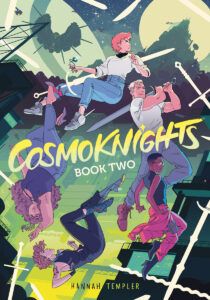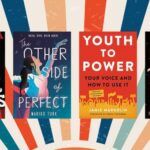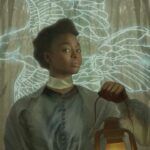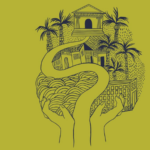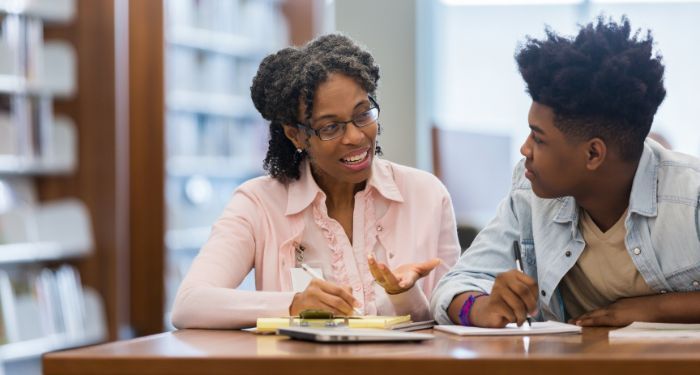
Ways High School Librarians Can Foster Critical Thinking
Librarians are trained to find information across all content areas. We think about ways that we can support teachers and students, no matter the subject. One of the best ways that we can aid both groups of patrons is by teaching people how to think for themselves. I’ve written before about what rights students have to access books. Now, I want to help other educators encourage curiosity, in their own and, their students’ thinking.
Critical thinking skills need to be taught, just like reading, writing, and math skills. They are not innate. Look at meditation and mindfulness for example. While the ability to be mindful is in all of us, mindfulness and meditation must be practiced. Learning to observe your thoughts is a skill, just like learning not to be reactive is a skill. Both of these can improve over time with consistent practice. Learning how to think critically is similar. It takes instruction and practice to learn how to understand, analyze, and assess information. Then to take those conclusions and connect them to real world issues, personal problems, from analyzing literature in English class to hypothesizing in science. Many of the same strategies can be used across the board.
Teaching these skills can be frustrating and slow going at first. Not only because human brains aren’t fully developed until a person has aged to their mid to late 20s, but also because it takes a lot of time and patience. It takes effort to teach, and to learn, critical thinking. It’s like teaching a kindergartener to tie their shoes. It’s much faster for a parent or guardian to tie the shoes for the child or to get them slip on or velcro shoes, but that’s not teaching them anything. Is it going to take longer to leave the house if everyone waits for the child to tie their own shoes? Absolutely. It’s also going to be worth it when that child can do it themselves, gain confidence, and develop dexterity.
CHARACTERISTICS OF CRITICAL THINKING
In order to foster critical thinking in students, we have to know what critical thinking looks like. Critical thinkers are open-minded and skeptical. They want to figure out answers themselves from their own research and information gathering. They value reasoning and respect others’ opinions when fact based and logically explained. They are able to argue for or against opinions, and understand that a person’s point of view is a big factor in the way they think.
According to the Foundation for Critical Thinking, a well-cultivated critical thinker will be able to:
- Ask vital questions in a clear manner
- Gather and assess research that is relevant to the question at hand
- Effectively interpret information
- Arrive at logical conclusions
- Be open-minded and willing to question conclusions drawn without sufficient information
- Ability to practice metacognition — or the ability to think about your own thinking
HOW CAN LIBRARIANS HELP?
I like to think that librarians can play an aunt or uncle role to students in the school. What I mean by this is, they are another educated and informed adult who can teach a lesson that expands on what the classroom teacher has already been laying the foundation for but in a new way that helps students understand concepts better. A parent can tell their child something over and over again, but once the aunt or uncle says the same thing, it clicks for the kid.
Metacognition. Getting students to think about their own thinking is crucial. Ask them questions about their opinions. Help them analyze their own thoughts and take a step back from routine thinking. Do they believe what they think because it’s all they’ve ever heard, or is it because that’s truly their own opinion?
Identify bias. Teaching students how to find bias while researching is standard library practice. But push this idea even further and have them identify their own biases. Then ask them where they think those biases come from. Every student brings a whole lot of context to the school building. They’ve lived experiences that have shaped their thinking. Point out easily overlooked personal contexts like race, economic status, and physical locations. A person raised in a rural area will have fundamentally different experiences that inform their opinions than a person in the suburbs. Get them to identify what some of those biases might be.
Challenge ideas. Now that students are thinking about what they are thinking about, challenge those ideas. Spark curiosity in them by asking about how they drew those conclusions. Offer other viewpoints. Remind them that their search history and social circles can affect results they’ll get from internet searches.
Teach research. This is an often overlooked skill in the internet age, and one that librarians are authorities on. People think that because they have cell phones or laptops, that every answer is available to them immediately. Like Libraries Transform says, “The quickest answer isn’t always the best answer.”
Add nuance. Show patrons that their browsing behavior can seriously affect their search results. Many of us are unknowingly living in an echo chamber. Our social media algorithms are trying to get us to spend more time on the app, not inform us. Initial Google results are often sponsored. Teach them why this is and why databases and the carefully curated collection in the library will help them leave those echo chambers. Yes, everyone brings their own context to the library. Help them understand that the library can expand that context beyond what lived experiences are able to do.
Explain paywalls. People may not know that reliable information is often behind a paywall. The people who researched and published information want to, rightfully, be paid for their work. Let them know that libraries allow free access to much of the information that’s behind paywalls. Don’t forget, “The quickest answer isn’t always the best answer.”
Librarians are passionate about information literacy and are authorities on critical thinking. We spend a great deal of time analyzing and synthesizing information in our jobs so that we can serve our communities. We want students to believe what they believe because they’ve come to their own conclusions, not because they don’t know that other options are available. Creating curious students creates curious citizens after graduation. Fostering lifelong learners is our ultimate goal.



